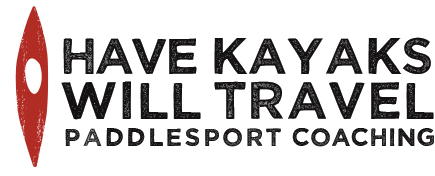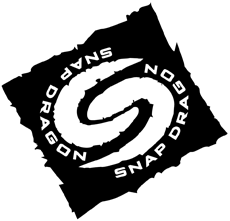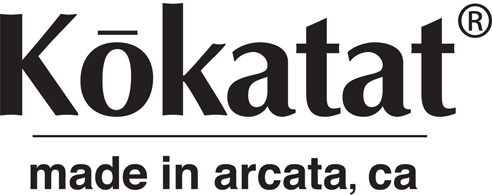For a year or so, we’ve been trying to improve our understanding of weather systems in general and forecasting in particular. We’d simply love to be able to look at the sky and say things like, “There were wispy cirrus clouds yesterday afternoon and they haven’t thickened, so the weather should remain fair for the next 24 hours.” Our motivation is more than academic; we want to feel more confident about when it’s safe to paddle and when we ought to stay home.This goal has led us to purchase various weather books, follow the weather page of the Chicago Tribune almost obsessively, check in regularly with several weather-related websites, and take lots of photographs of clouds. Here are some images from our ride home, along with our understanding of what they suggest about impending weather. Low blankets of thick nimbostratus clouds predict rain–which, in fact, happened shortly after we took this photo. As a new front moves in, fair-weather cumulus clouds give way to taller, more ominous swelling cumulus clouds, which later built to cumulus congestus. True cumulus congestus clouds. Next stop: cumulonimbus (thunderhead) clouds. Rain falling and thunder in the distance. Probably not the best time to be out on the...
Trailer trouble on the home stretch
Canadian Tire to the rescue. Another thing Google Maps doesn’t account for: trailer trouble.We left Madawaska at 7:30 this morning, hoping to make it to Kalamazoo by early evening. But by 10 a.m., our right wheel was rubbing on the fender and smoking. We pulled over and spent close to two hours removing the fender, then discovered that the U-bolts connecting the spring to the axle were loose. We tightened them, but that left the trailer listing to the right. That’s when we realized the true root of the problem: one of the leaves of the right side two-leaf spring was missing. No doubt it had jostled loose and fallen off on a bumpy road this morning. So we set off in quest of a new spring (and perhaps some assistance installing it) on the Friday before Canada Day, when everyone else was busy buying fireworks and beer.We pulled into a truck garage first, where a kindly service manager assessed our problem and agreed that we might not be wise to continue driving with the trailer looking as it did. He didn’t carry small springs like ours and wasn’t supposed to work on any vehicles other than trucks, but said he would try to help if we could find the part. He sent us off with directions to the local Canadian Tire, a nationwide chain of stores that used to specialize in tires but has since expanded to sell nearly everything but food.That Canadian Tire location no longer carried springs, but the service manager there called four others to find one that did. Long story (and long afternoon) short: We wound up in London, where a service manager and mechanic embraced the challenge. They didn’t have a two-leaf spring, so they modified a four-leaf spring, and while they were at it checked the wheel bearings and made some needed adjustments.We tipped each of them with a six-pack of good, dark beer. By 8 p.m., we were on the road again, our trailer humming happily behind us.What struck us about this afternoon is this: Everyone we encountered tried to help, even though they were getting ready to leave for a national holiday weekend. They all went out of their way to do whatever they could to help solve our...
Madawaska musings
The sign at the entrance to Madawaska Kanu Center. We chose to enroll the kids in a whitewater course at Madawaska for several reasons: It’s the oldest whitewater school in Canada (now in its 38th year), closer than Nantahala (which we also considered), in a beautiful location, and offers an enticing variety of programs, including family weeks. The two of us chose not to participate this year because we’re saving up for some sea kayak training this fall, but the kids were eager to gain more whitewater skills and we were happy to camp on the grounds and spend our days padding local lakes.The facility is lovely. Modeled after German ski clubs, it includes a rustic lodge where meals are served and people hang out in the evenings reading kayaking books and magazines from the well-stocked shelves; comfortable sleeping quarters; hot showers and a sauna. The main building, with the office and boutique at the left and the dining hall and lodge to the right. Hanging out in the evening, talking and playing games. The food is excellent, and the boutique sells a nice range of paddling clothing and gear. The Madawaksa River is just across the street.This year, like last year, we were struck by the warm, encouraging atmosphere. The tone is certainly set by the owners and the instructors, who don’t make a big point of touting their considerable training and experience and instead emphasize their excitement about teaching. They inspire their classes with lots of humor and considerable humility (not to mention lots of whitewater lingo, which is totally tubular). Hannah with JT and Alex, two of the “tubular” instructors. We felt that Hannah, Jeremy and all the students kids received instruction appropriate to their skills and temperaments. That’s the hallmark of excellent teaching in any subject area, and a particular strength in outdoor...
A few more photos from the past three days
Today is a puttering around in Barry’s Bay day. We found fast, free internet access at a picnic table next to the visitors center. Nearby is the Chip Barn, which serves poutine, the regional specialty of twice-baked fries with gravy. There are only a handful of galleries here and no Makinaw Island fudge, and the LCBO (the province-regulated liquor store) closes at 6 p.m.Instead there is a friendly storefront department store and a well stocked independent pharmacy. It’s easy to find multiple kinds of bug repellent and netting, as well as a battery of bite remedies for when those don’t prevent the damage.Barry’s Bay is also home to the first Polish community in Canada. Many of the roads have Polish names and there is, we have been told, a wonderful Polish restaurant nearby. It’s also the home of Barry’s Bay Outfitters, the place to go for kayak and canoe rentals, accessories, guided trips and local knowledge. Owners Eric and Sharon Taylor are glad to share information about paddling spots and local lore. The Taylors in their shop, Barry’s Bay Outfitters. Following are some photos of what we have been doing the last three days when we were miles (and seemingly years) away from internet access. The intersection of the two main roads in Barry’s Bay features signs advertising various local attractions and businesses, including Madawaska Kanu Center. Poutine, anybody? The Chip Barn smells heavenly. Alec paddles near a huge granite boulder on Bark Lake. A wild orchid on the shores of Bark Lake, rotated sideways because we didn’t know how to fix it in this program. Oh well. Where’s Alec? Sharon tows his boat to the put-in while Alec tries to find it from shore. Life is good. The bugs are vicious. Sharon’s badly swolen eyes. You don’t want to see her neck. The lodge at Madawaska Kanu Center, where the kids are spending their nights. Paddle hard, rest...
A riddle (sort of)
Question: What do two sea kayakers do on their day off?Answer: Work on their boats and paddles and blog about kayaking.OK, so it’s not a great riddle, but it’s accurate.We’re in Barry’s Bay today. While Hannah runs a class 4 section of the Ottawa River and Jeremy takes on ever-more-challenging sections of the Madawaska River, we’re adding foam to Alec’s backband, finishing Sharon’s traditional paddle and catching up with our posts. Alec shapes a foam addition to his backband. The picnic table outside the Barry’s Bay visitor information center provides both sanding surface and internet access. Yesterday we paddled about 15 miles on Lake Kamanisteg, which is connected to Bark Lake by a short section of the Madawaska River. A dam between them generates electricity and controls water levels. Because the water runs off the top of Bark Lake, it’s relatively warm. Madawaska Kanu Center has an agreement with the dam authority about the hours when the water runs. Those are the prime whitewater hours–perfect for classes and for fun.We continued our navigation practice, but also had the opportunity to paddle for a couple of hours into a pretty strong head wind (we estimate it at 25 knots with 30 knot gusts). Paddling into the wind is kind of like towing, and appealing in a similar way. You go more slowly with all that resistance and have a great opportunit to work on your forward stroke. It was impossible to take photos, however.This is a partial post, to be continued when we next have internet access. Alec finished the foam and paddle, so it’s time to find some...
Tuesday’s post (also on Thursday)
The classes are going well; Hannah and Jeremy are enjoying them and being challenged. We’ll hold off writing much about their experiences until we’re able to spend more time talking with the kids. We see them briefly in the morning and the evening, but we’re trying not to pull them away from the other students, with whom they’re able to share stories of sticky holes and daunting drops. Besides, everyone is too tired in the evening to really sum up what the day was like. Hannah and Bob Goldstein on the lodge porch. In the evening, everyone hangs out playing board games and cards and swapping tales from the river. We paddled about 18 miles on Bark Lake today, practicing our navigation skills and enjoying the serenity. We saw only one other boat all day (a motorboat) and nobody along the shore of this large reservoir lake, which is mainly surrounded by crown land. I get 150 to that large rock on the point–how about you? We’re using a topo map, deck compasses and bearing compasses for these exercises. (You can’t get nautical charts for small inland lakes.) It’s remarkable how different landforms look from the water (our perspective) and from the air (the map’s perspective). We have to be careful to write down our back bearings. Today we failed to really look at our put-in as we left. We returned to what we were sure was the right spot, but couldn’t find it. After much hunting (including scouting on land), we discovered that we were merely 50 feet off. That’s all it takes to feel thoroughly...
Hiking with the mosquitoes
(This post was written on Monday night) A bug shirt helps, but the mosquitoes and black flies are smarter than we are and figure out how to bite us despite all our defenses. The five-day whitewater kayaking program began today. With thunder rumbling in the distance and the skies darkening by the moment, Claudia (the owner) and the week’s instructors introduced themselves and gave an overview of the week ahead. We watched the students—some excited, some nervous, some both—and thought about what the instructors chose to emphasize about themselves and their priorities. Enthusiasm goes over well. It’s kind of contagious.After the kids were settled, we drove to Algonquin Provincial Park, where we went for a 10-kilometer hike on a steep trail that turned out to be a stream in places. It was perhaps the buggiest hike we’ve ever taken; swarms of mosquitoes hovered around us as we negotiated the mud, rocks and fallen branches. Any surface that wasn’t under water was slippery. This might be the first time that a hike classified as “difficult” actually was, though it wasn’t for the reasons the park administrators had in mind.We earned some spectacular views of the park as well as some awe-inspiring smaller features: beaver dams, wildflowers and mysterious insect colonies. They’re little, black and in motion: Anybody know what these are? Some enterprising beavers created a lake out of a river. Our reward for hiking despite rain, bugs and occasional thunder: spectacular views and dramatic...
Monday’s post (on Thursday)
Yesterday we bid farewell Larry & Bonnie and drove to Madawaska Kanu Center, near Barry’s Bay, where we’ll be staying until Saturday. Bonnie sent us off with numerous goodies: scones, lemon bars, butter tarts, and the delicious vegetarian chili and cornbread dinner we were all to full to eat last night. (Somehow we found room for dessert, however.) Tragically, Bonnie made too many scones, so we had to take half a dozen of them with us. Life is hard. As we drove, we read about this area in the “Ontario Nature Guide” by Krista Kagume (Lone Pine Press). We passed huge stretches of open land – a striking contrast to the drive from Chicago to Maryland — and were struck by the expansive view of the sky, the glimpses of wildlife, and the overall beauty of the environment. We learned that this area is part of the “mixed forest,” one of five ecoregions in Ontario. Below the boreal forest, the transitional mixed forest lies at the lower edge of the Canadian shield and features a mix of deciduous and coniferous trees and abundant wildlife and plant species. Yesterday morning we heard bullfrogs twanging in the reeds and saw red-winged blackbirds flying overhead. We’ve fed numerous mosquitoes, 55 species of which are found in Ontario. Turtle crossing. By the time we reached Barry’s Bay, it was pouring. We took the opportunity to shop for maps and food before driving the final 15 kilometers to Madawaska. We weren’t excited about pitching our tent on a wet site, but as it turned out, no rain had fallen that short distance away. We ate our chili and cornbread (thank you, Bonnie!), settled in and scoped out our internet access for the coming week. There isn’t any at Madawaska, a situation we’re ambivalent about. Sure, we’d like to continue posting daily and reading email, but there’s also something to be said for only being in the place you are for the time that you’re there. Lack of internet access will certainly enhance that feeling. (We’ll post whenever we visit Barry’s Bay.) Home sweet home: Our camping spot at Madawaska Kanu...
Seeing more at a slower pace
We arrived last night just in time for dessert. Over Bonnie’s homemade brownies and lemon bars, we reconnected and relaxed until we were too tired to stay awake.Bonnie, it turns out, is a talented cook and baker. She worked as a recipe tester for Yankee Books for six or seven years and has an extensive collection of cookbooks as well as a serious interest in good food. We awoke to French toast with warm maple syrup and pecan topping; lunch included vegetables with her curry dip and an assortment of artisan cheeses along with crusty loaves of bread. As I’m writing this post, I’m eating a bowl of strawberry shortcake: freshly baked biscuits, strawberries from the garden, homemade whipped cream. We’re being utterly spoiled.After breakfast we explored Larry and Bonnie’s two acres of land, including the raised-bed garden where they’re growing tomatoes, potatoes, strawberries, peas, greens, herbs, squashes and more. Wandering through the garden. Then we wandered through the outdoor market in Ottawa, where vendors sell fresh fruits and vegetables, cheeses and chocolates, scarves and sculptures, baguettes and bangles. Sadly, the camera battery died, so we had to record only mental images of baskets of ripe strawberries, bunches of radishes, bouquets of flowers and people everywhere buying, selling, eating, talking. Last shot before the camera battery died. After lunch, we helped Larry & Bonnie erect a screened dining tent in their backyard and assemble a picnic table. These instructions weren’t written in the US or Canada. Let’s wing it. Then Larry took the kids for a ride in his 1989 Citroen. (It gets 70 miles to the gallon.) Rolling back the roof on Bernard l’Hermit, the Citroen. Cruising down the road. Later, we went for a short run down Old Montreal Road in Cumberland, a rural town recently incorporated by Ottawa. The sides of the road were lined with purple clovers, chamomile, queen anne’s lace and wispy grasses; cows grazed in the fields, bicyclists pedaled past, birds called overhead. We were struck by the contrast between yesterday, when we sped through three states too quickly to see much at all, and today, when we took the time to see, hear, smell and taste. You can’t take in too much in one day at any pace, of course, but it was rewarding to slow down a bit. Bonnie’s one-bowl brownies 2 squares unsweetened chocolate1/2cup vegetable oil1 cup sugar2 eggs, well beaten1/2 cup flour1/4 tsp. salt1 tsp. vanilla1/2 cup finely chopped pecans Melt chocolate and oil in microwave. Blend in sugar, then eggs. Add flour and salt. Stir well and add vanilla. Pour into greased 8-by-8-inch pan. Sprinkle with chopped nuts. Bake at 400 degrees for 20 minutes. Do not overbake....
Random thoughts on the road
Today is a travel day: 550 miles, which will take us about 10 hours. This leaves plenty of time for reflecting back and thinking ahead, as well as noting a few things about travel and the places we’re traveling through. When we pull into a roadside stop, we have to park with the other big rigs. We began with a quick stop at a nearby Food Lion, which reminded us of something we’ve noted before: Food stores offer a fascinating glimpse of the places they serve. Spices, baking mixes and jams are often the most localized items. Here we took the opportunity to buy some Old Bay seasoning, which Robert told us was an essential part of the Chesapeake experience. Maple syrup, ski slopes, pub food, alpacas…Marathon seems to have it all. It’s really strange sitting on a soft seat, zipping along at 60+ miles an hour. It’s kind of like sitting on your sofa, but you can’t stretch out, and you have to stay seated for an absurd amount of time. For the past week, we’ve done most of our sitting in kayaks, which is a very active kind of sitting. To paddle well, you have sit up pretty straight (“the dynamic seating position”) and use your core muscles as you move through the water. Car seats somehow encourage slouching, and with it back and shoulder pain. And instead of using our muscles to power our craft, we’re burning gasoline. If driving weren’t necessary, we certainly wouldn’t do it. The notion of a “joy ride” seems alien and unnatural. There’s time on the road for reading, napping, listening to music and doing sudoku puzzles. Before we left home, we used Google Maps to generate directions for each leg of this trip. We also brought along an atlas and a set of state road maps, but we figured we’d mainly rely on the Google route. Instead we’ve found ourselves frustrated by the Google directions and relying on the maps. It’s kind of interesting to realize why.First, the Google directions have tunnel vision. They may provide the most direct or quickest route, but they feel strangely out of context. Looking at them, you can’t answer the question, “If we pass Main Street, have we gone too far?”Second, the Google directions are robotic. If a road changes names as it passes through a town, Google notes it as a new leg of the journey with a mileage all its own, making it hard to see how many miles you actually should travel on that road.Third, they contain errors. Robert told us about a sign posted somewhere he’d been that said, “Google maps is wrong!” because it was leading people down a...







